[12/11/2017. Note: Professor Kiernan has responded to this post and has graciously pointed out that a comment I made is incorrect. There is one character that is discussed in this post that is very important, and in my original post, I stated that in the “two” versions of the text that is discussed below that I consulted the character in question appears as “xuyên 川” meaning “river.” In fact, it is true that in “one” of the texts I consulted the character in question appears as “xuyên 川” but in the other it appears as “thủy 水” which in its most basic sense means “water” but which is also used (including in the context of this text) to mean “river.”
My apologies to readers for not including an image from the version of this text that does use the character “xuyên 川.” Here it is:
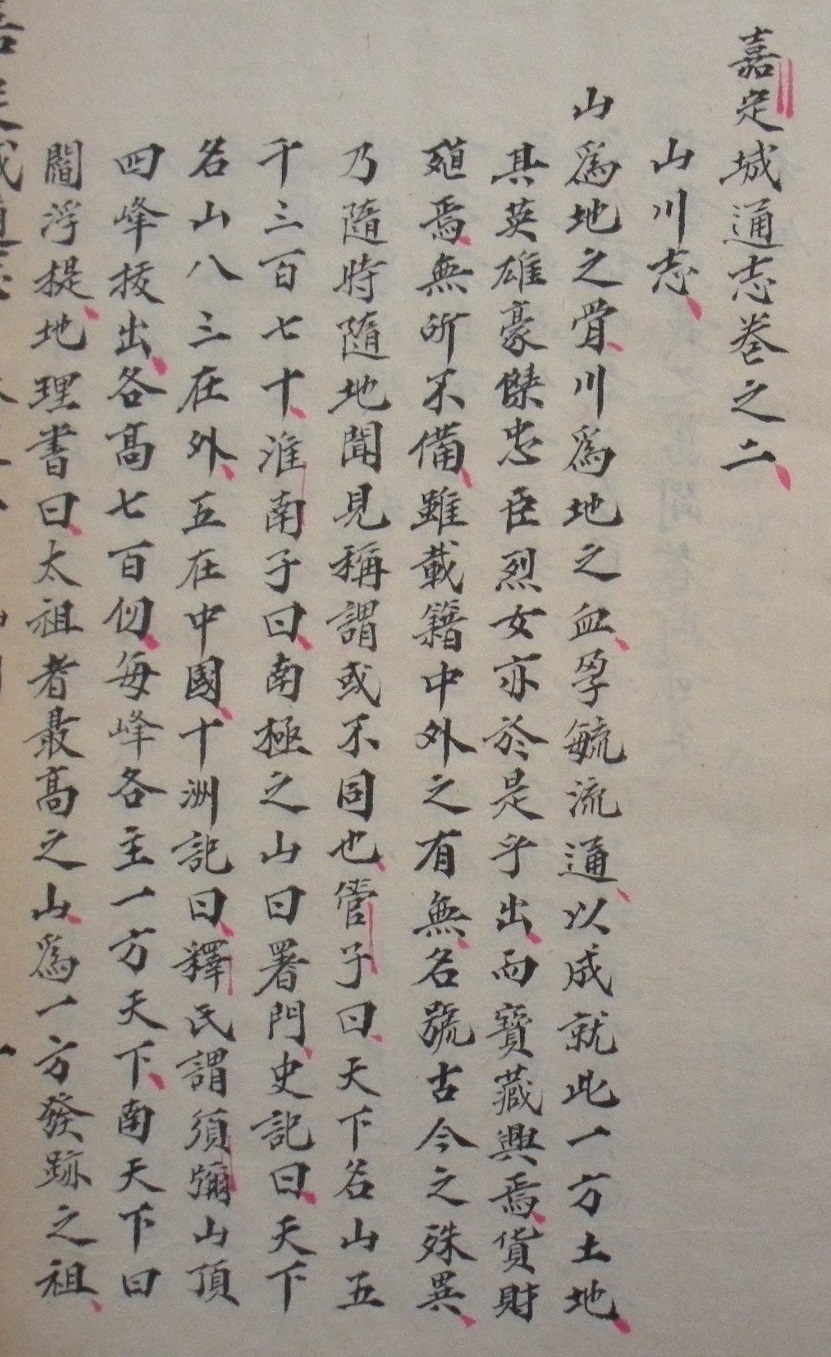
In addition, I would just also like to note that in the version that uses the character “thủy 水,” the meaning is still “river.” That is why the Vietnamese translators of this text (see the image below), translated “thủy 水” as “river” (sông nước), and it is also why the English translation of the ancient Chinese text that I say this Vietnamese text is emulating also translates “thủy 水” as “river.” Again, see the image below.
Thank you again though to Professor Kiernan for pointing this out, and for all of the other readers who have used the “comment” function on this blog to engage in discussions with me over the years. This is why I am so fond of the academic blog format. At the same time that I share ideas with readers I can get constructive feedback from informed readers before reworking my writings and submitting them for peer review and publication. That is definitely a “win-win” situation.
Further, for anyone interested in learning more about the text that is discussed below – Trịnh Hoài Đức’s Comprehensive Gazetteer of Gia Định Citadel – and to gain an understanding of why the translation of that text that Professor Kiernan relies on in his book is so bad (and yes, it is unquestionably bad), this blog post may prove to be helpful.
Finally, and most importantly, contrary to Professor Kiernan’s claims, and as the above image indicates, and as the meaning of the character “thủy 水” as “river” in the other version also indicates (supported by the Vietnamese translation), I did not mistranslate anything here, and I have not “retracted” my charge that Professor Kiernan did mistranslate this text. Yes, he has correctly translated Aubaret’s incompetent translation, but he has not correctly translated (and has most certainly not understood) Trịnh Hoài Đức’s text, regardless of which version one consults to do that.
I have also never “corrected” my charge that Professor Kiernan does not know Vietnamese. After one of his former teachers informed me that Professor Kiernan had taken a class (or classes) from him, I wrote that he apparently knows “some” Vietnamese. However, while “some” Vietnamese may be sufficient to order a bowl of phở, it is not sufficient to conduct research on Vietnamese history, and the footnotes in Việt Nam: A History from Earliest Times to the Present make it completely obvious that Professor Kiernan did not, and cannot, consult Vietnamese language texts on his own at a level required of a professional historian.
Professor Kiernan, meanwhile, has not effectively responded to any of the many detailed critiques that I have made of his book, despite the fact that he has penned a “response.” Obviously running after authors and editors and making demands of them is time consuming, so perhaps we will see a more meaningful response once that task has been fully completed. And while the smoke and fireworks that he has offered might distract some who have not actually read his book and compared it to what I have written, again, I have yet to see Professor Kiernan successfully counter a single one of the many critiques of his book that I have put forth here in several blog posts and in the Mekong Review.]
In a conclusion that I wrote to a series of posts on Ben Kiernan’s new Việt Nam: A History from Earliest Times to the Present I noted that the book begins with the sentence, “‘The mountains are like the bones of the earth. Water is its blood,’ wrote a Vietnamese geographer in 1820” (1), and I stated that this “sentence is the perfect sentence to open this book, as it perfectly symbolizes how flawed the scholarship in the pages that follow is.”
My argument was that Kiernan had produced an inaccurate translation of a bad French translation of a classical Chinese text, and that this example of the uncritical use of a flawed source was typical of Kiernan’s own flawed scholarship in this book.
Kiernan quoted page 111 of G. Aubaret’s 1863 (really bad) translation of Trịnh Hoài Đức’s 1820 gazetteer of the south, the Gia Định thành thông chí, where Aubaret wrote that “L’eau est à la terre ce que le sang est dans les veines de l’homme: elle a comme des alternatives de respiration et d’aspiration pendant lesquelles elle avance ou se retire.”
[Water is to the earth what blood is like in the veins of man; it has alterations of breathing in and breathing out, during which it advances or withdraws.]
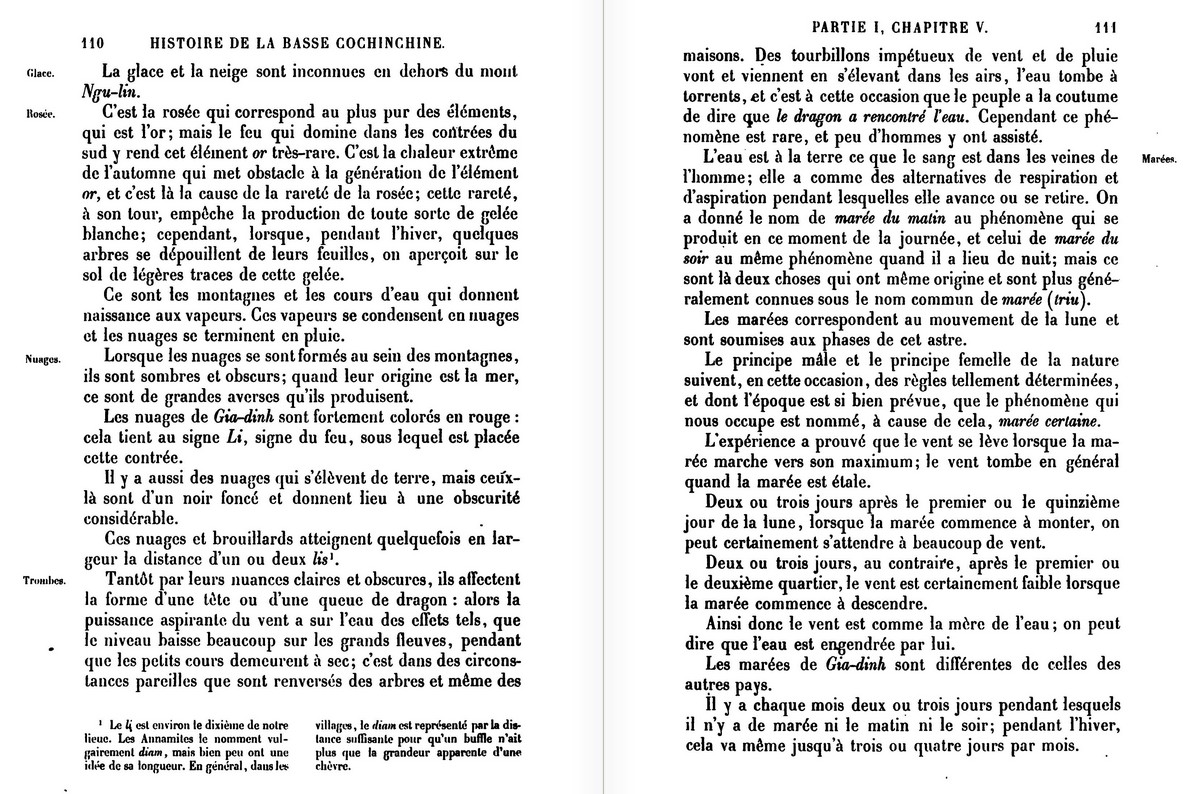
I pointed out that Kiernan’s quote is not an accurate translation of Aubaret’s text, and that Aubaret’s text is a poor translation of the classical Chinese original, where Trịnh Hoài Đức repeats information from Wang Chong’s 王充 first-century CE Balanced Discourses (Lunheng 論衡) where it explains how tides are created:
“Water constitutes the earth’s arteries. Tides are created by the intrusion or extrusion [in the earth’s arteries] of khí/qi.”
[水者,地之血脈,隨氣進退而為潮。]
And again, I also noted that this uncritical use of a bad translation was one of numerous problems that one can find with Kiernan’s scholarship in this text.
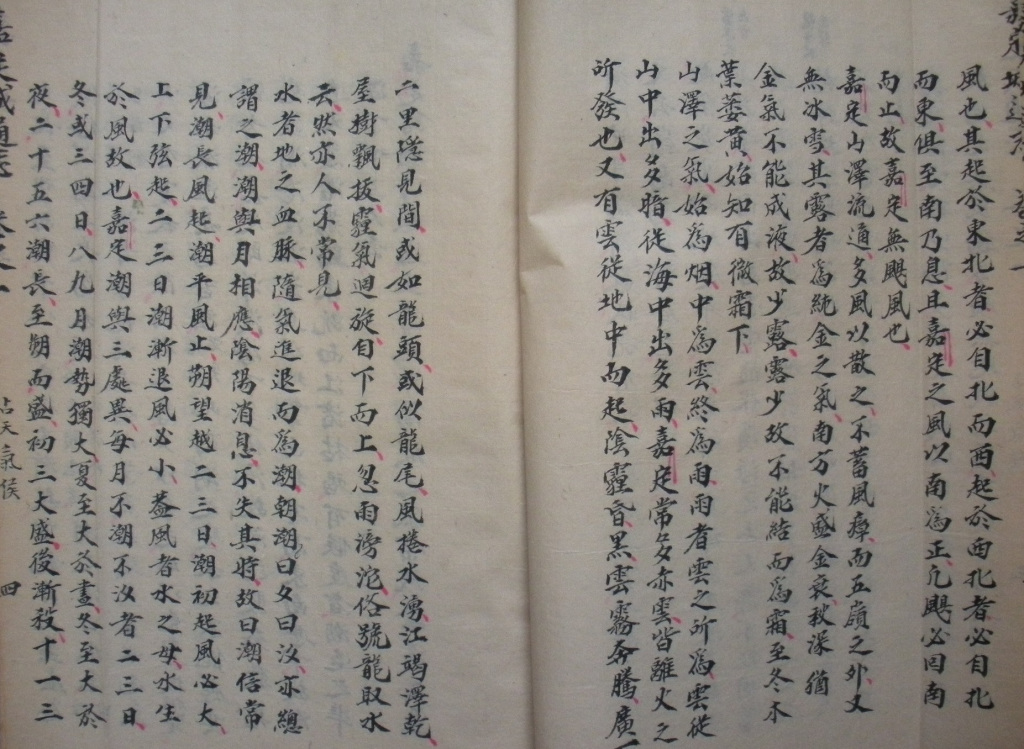
It has now come to my attention that Kiernan may have cited the wrong page of Aubaret’s translation in his footnote.
On page 115 (rather than 111) of Aubaret’s translation there is a passage which states that:
“Mountains are like the bones of the earth and water is its blood. The entrails of the earth, similar to those of man, conceive in themselves, and then when the day comes, they produce. Thus, just as one finds heroes, sages, loyal subjects and virtuous women in certain places of the world, so does the earth give us its precious stones and all its riches in never-ending succession in certain locations.
[Les montagnes sont comme les os de la terre; l’eau en est le sang. Les entrailles de la terre, pareilles à celles de l’homme, conçoivent en elles-mêmes, et puis, le jour venu, elles produisent. Ainsi, de même qu’en certains lieux du monde se trouvent des héros, des sages, des fidèles sujets et des femmes vertueuses, de même la terre en certains endroits nous donne ses pierres précieuses et toutes ses richesses variées, dont la succession ne s’arrête jamais.]
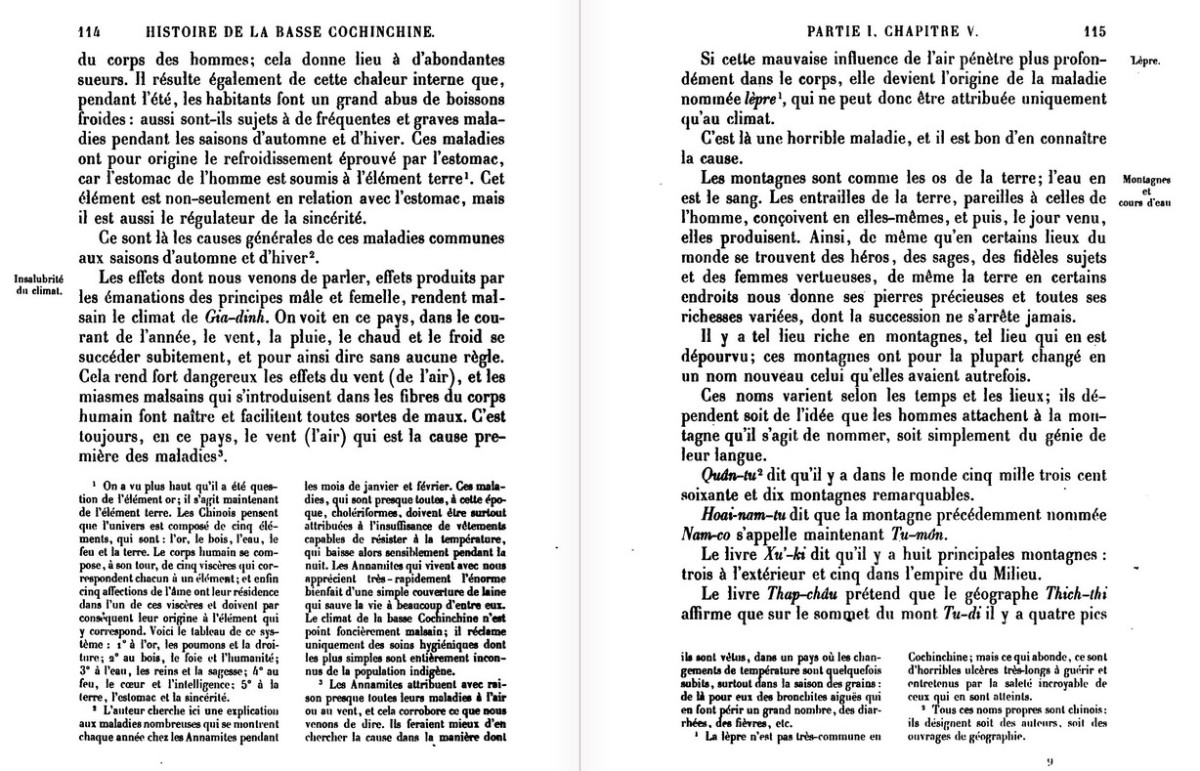
The opening line here from this passage on page 115 of Aubaret’s translation appears to be what Kiernan translated. So his English translation of Aubaret’s French text is accurate.
However, as for what it is that Aubaret actually tried to translate, and what it is that Trịnh Hoài Đức actually wrote, that is difficult to determine as there are significant discrepancies between Aubaret’s translation and the information in that same passage in extant versions of the Gia Định thành thông chí.
The two extant versions of Trịnh Hoài Đức’s text that I’ve consulted state the following at the beginning of a chapter on “mountains and rivers” [sơn xuyên 山川] [11/30/2017. This is my error: one of the versions that I consulted has xuyên 川 (river) and the other has thủy 水 (water/river), however as the translation of this text indicates, thủy 水 (water/river) in this context means the same thing as xuyên 川 (river).]:
“Mountains [sơn 山] are the earth’s bones and rivers [xuyên 川 or thủy 水] are the earth’s blood. With gestation they produced this piece of land. Its heroes, worthies, loyal officials and virtuous women all then appeared, precious items emerged and articles of value grew.
山為地之骨,川為地之血,孕毓流通,以成就此一方土地。其英雄豪傑忠臣烈女亦於是乎出,而寳藏興焉貨財殖焉

“Mountains [sơn 山] are the earth’s bones, and rivers [xuyên 川 or or thủy 水] are the earth’s blood” is not the same as “Mountains are like the bones of the earth and water is its blood.”
“With gestation they produced this piece of land” is not the same as “The entrails of the earth, similar to those of man, conceive in themselves, and then when the day comes, they produce.”
And “Thus, just as one finds heroes, sages, loyal subjects and virtuous women in certain places of the world, so does the earth give us its precious stones and all its riches in never-ending succession in certain locations” is not the same as “Its heroes, worthies, loyal officials and virtuous women all then appeared, precious items emerged and articles of value grew.”
How do we explain these discrepancies? Are they just due to the fact that Aubaret’s knowledge of classical Chinese was inadequate and he produced a lousy translation?
Or was the text that Aubaret consulted different from the extant texts that we have today?
The answer is probably a combination of both of these possibilities.
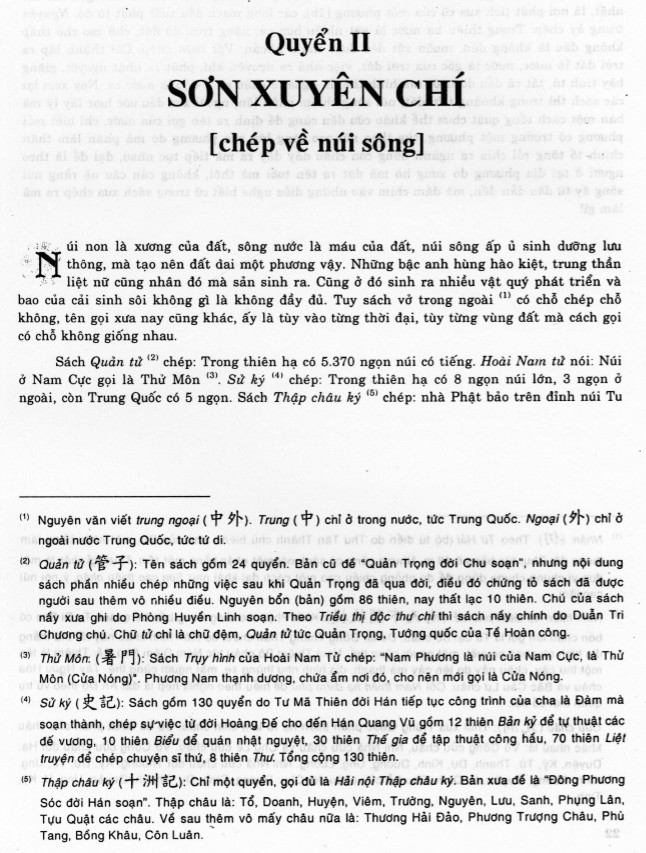
Some of the words that appear in Aubaret’s translation, such as “Mountains are like” and “entrails,” suggest that the text that he consulted was different from the one that we have now. One difference may have been that the passage in the version that Aubaret saw might have been modeled more closely on another statement from Wang Chong’s Balanced Discourses.
There is a passage in that work that states:
“Mountains are like people’s sinews [lit., “bone joints”] and rivers are like people’s arteries [lit., “blood veins.”]. When people eat, their entrails become full, and their sinews and arteries also become satiated.
“When sacrifices are made to Heaven and Earth, the mountains and rivers [sơn xuyên 山川] likewise become full. If the mountains and rivers are sacrificed to separately, as if they were separate gods, this is like having to feed someone’s sinews and arteries after he has eaten already.”
山、猶人之有骨節也,水、猶人之有血脈也。故人食腸滿,則骨節與血脈因以盛矣。
今祭天地,則山川隨天地而飽。今別祭山川,以為異神,是人食已,更食骨節與血脈也。

Although Wang Chong literally mentioned “mountains” and “rivers” by using the character for “water” (shui/thủy 水), we can see from this passage that he was clearly talking about mountains and rivers [sơn xuyên 山川] and was urging people to not perform sacrifices to mountains and rivers, a practice that dates back to at least the time of the Zhou Dynasty in the first millennium BCE. In fact, the term for “water” in the opening phrase (thủy 水) can also mean “river,” so perhaps that is the meaning that Wang Chong intended by using that term anyway.
As such, something closer to Wang Chong’s text, with its reference to “entrails” and “mountains are like,” may have existed in the text that Aubaret translated, and that passage may have then been simplified by someone who made a copy of this manuscript to become the “Mountains [sơn 山] are the earth’s bones, and rivers [xuyên 川] are the earth’s blood” in the text we currently have (and the reference to “entrails” dropped).
If that is not the case, then the only explanation can be that Aubaret’s translation is appallingly inaccurate.
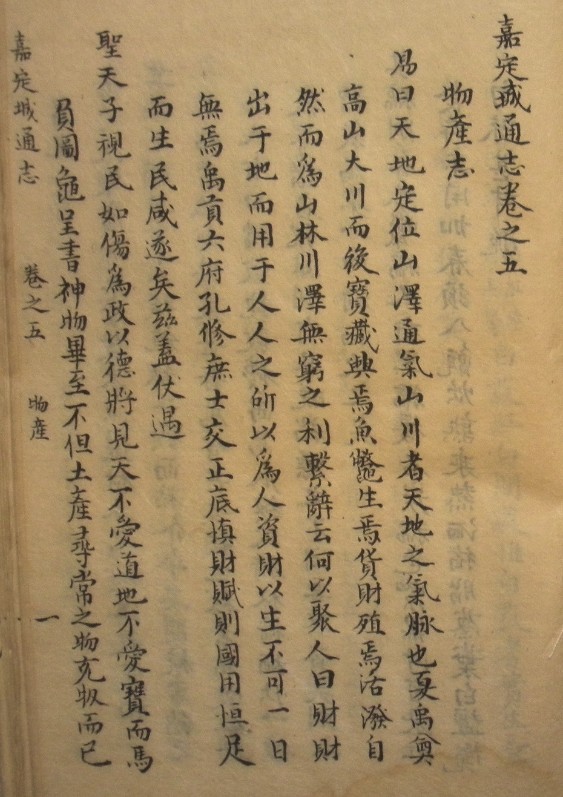
From another passage in the Gia Định thành thông chí we can see that the concept of mountains and rivers [sơn xuyên 山川] certainly was important for Trịnh Hoài Đức.
In a section on the products that were produced in the Mekong Delta region, Trịnh Hoài Đức comments that:
“The Classic of Changes [Yijing] states ‘Heaven and Earth occupy determinate positions. Mountain and Marsh communicate with their khí/qi.’ Mountains and rivers [sơn xuyên 山川] are the khí/qi arteries of Heaven and Earth. After Yu of the Xia [Dynasty] settled the high mountains and great rivers, precious items emerged. . . and articles of value grew.”
This last phrase, which we also saw above, comes from the Doctrine of the Mean (Zhongyong 中庸), and the phrase about Yu settling the mountains and rivers comes from the Venerated Documents (Shangshu 尚書), also known as the Classic of Documents (Shujing 書經).
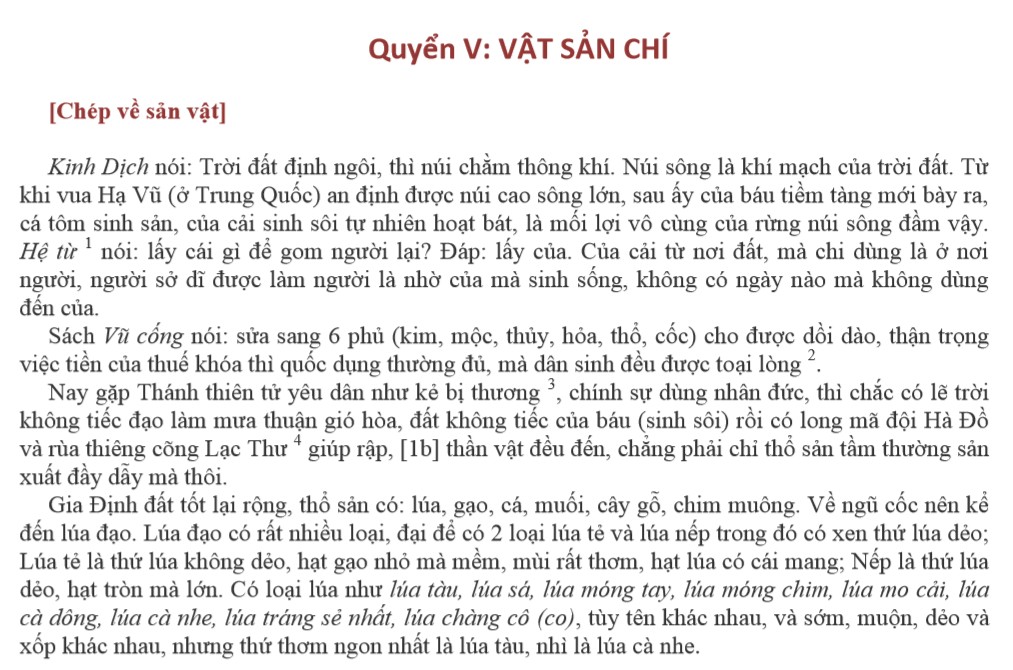
What does all of this tell us? It tells us that “‘The mountains are like the bones of the earth. Water is its blood’” is an accurate English-language translation of a passage in a French text from 1863.
And what does “‘The mountains are like the bones of the earth. Water is its blood’” tell us about Vietnam or Vietnamese history? Absolutely nothing because these words have nothing to do with anything that was written by Trịnh Hoài Đức, the “Vietnamese geographer” who wrote about the Mekong Delta in the early nineteenth century, or by any other Vietnamese ever.
There are other issues, however, with citing a statement by Trịnh Hoài Đức to indicate something significant about Vietnamese history.
I’m not sure if Kiernan is aware of this but Trịnh Hoài Đức was very proud of the fact that he was descended from a family of Chinese scholar officials from Fujian Province who fled to the Mekong Delta in the seventeenth century rather than submit to the rule of the invading Manchus.
He was also very proud of the education that he received as a youngster in the Chinese classics.
And he had good reason to be as Trịnh Hoài Đức was one of the most erudite scholars of his day. His Gia Định thành thông chí attests to all of this as it is filled with the markers of the worldview of a highly accomplished member of the premodern East Asian elite. Trịnh Hoài Đức’s ideas about mountains and rivers, and the ways in which the powers of Heaven and Earth interacted with them, were ideas that members of that elite group had upheld for some two millennia by the time Trịnh Hoài Đức compiled his text.
As such, if his statement that “Mountains [sơn 山] are the earth’s bones, and rivers [xuyên 川] are the earth’s blood” in some way demonstrates to us something essential or significant about who the Vietnamese are, then one could easily use it to make an argument that the Vietnamese are 100% Sinitic in their worldview.
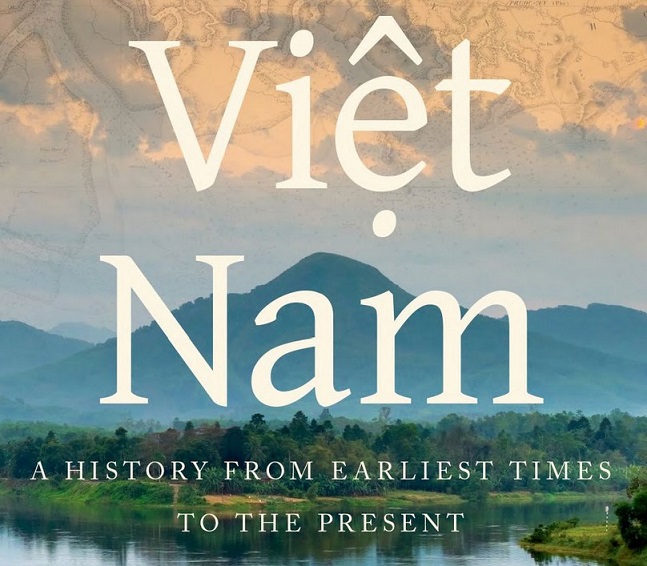
I don’t think that was Kiernan’s point in beginning his book by quoting an inaccurate translation of something Trịnh Hoái Đức wrote, but Kiernan doesn’t have the linguistic skills to figure that out.
That, as I stated before, is why this book is irredeemably flawed. It is impossible to write a survey of Vietnamese history (or of the history of any society for that matter) if one does not have the ability to understand and evaluate the historical sources (both primary and secondary) for that history. Việt Nam: A History from Earliest Times to the Present, unfortunately, repeatedly demonstrates this point.


This Post Has 7 Comments
Dear Le Minh Khai:
Thank you for the informative discussion. I wonder: what textbook to Vietnamese history (for my purposes, especially early modern Vietnam) would you recommend?
There are two new general histories of Vietnam in English:
1) Keith Taylor, A History of the Vietnamese
2) Christopher Goscha, Vietnam: A New HIstory
The Taylor book has more detailed information for premodern history, and the Goscha book is stronger on modern history.
For early modern. . . I think they are both good. 🙂
I may well have asked this question before. I tried to see if you have answered it, but my WorldPress isn’t working very well, If you have answered it, I apologise for asking it again. My first engagement with your blog was before I got very difficult in the summer.
i work on Choson Korea, but my teaching ranges to Vietnam, especially early modern Vietnam, a subject concerning which I do not know very much. So I very much appreciate your blog. From a scholarly perspective as well, I find your blog most informative as I look to understand Choson from a broader perspective.
I wrote badly above. “My first engagement with your blog was before my life became very busy during the summer.”
I just tired to say thank you, but my thanks may not have posted. In any case, thank you for your answer. The quality of my reference to Vietnam in class will improve thanks to you (also, thanks to Beyond the Bronze Pillars, which I am now reading.
It seems very interesting to me that too much focus is put on whether the character is “water” or “river”. It appears to me that this is a Chinese concept of mountain/river(water). If it is a Vietnamese concept and paramount to the Viet thinking as Huỳnh Sanh Thông explains, then there should only be “water/river” and no “mountain” in this whole concept, or that water/river has to be first.
Considering also the fact that south Vietnam (Gia Định at that time) is without any significant or real “mountains”, why did Trịnh Hoài Đức have to stretch his study to find “mountains” and put them before the “rivers” of Gia Định? I would guess that indeed he was more of a Chinese than a Vietnamese who would be more familiar with the “aquatic culture” of the south.
So Huỳnh Sanh Thông may not be wrong, Aubaret may not be wrong, but picking a quote from Trịnh Hoài Đức, especially one where the Chinese concept of placing mountain before water, in order to illustrate the importance of water to the Vietnamese, is rather inaccurate.
Maybe this poem by Tản Đà wher water is placed before mountains is more appropriate 🙂
Nước non nặng một lời thề
Nước đi đi mãi không về cùng non …
Winston Phan
Thanks, Winston, your comments are always insightful!
There is also just a problem with trying to use a single element so say something meaningful about a society over time. Ok, so if “water” is important for understanding Vietnam, then what is important for understanding Russia? “Snow”? “Cold”? “Clouds”? But wait, all of those elements exist in Alaska and Chile too. . . so why are they important for one place and not another, and how do they make one place distinct? ;(